Abstract
Twelve goat limbs were injected with red latex and then carefully dissected to display the vessels of the periosteum. The blood supply of periosteum was found to be derived from four sets of vessels: (1) Intrinsic periosteal system. (2) Musculoperiosteal system. (3) Fascioperiosteal system. (4) Cortical capillary anastomoses. The intrinsic system of vessels lay within the fibrous layer of the periosteum. According to the pattern of these vessels they could be divided into: (a) a short vessel pattern, where there were many small vessels with no predominant direction; (b) a circular pattern, where the vessels encircled the bone; (c) a longitudinal pattern, where the vessels ran parallel to the long axis of the bone. The musculoperiosteal system consisted of connections between the muscle circulation and the periosteal vessels at the sites of muscle origin. The fascioperiosteal system consisted of branches from a limb artery that ran in a fascial plane between muscles to supply the periosteum. The cortical capillary anastomosis consisted of capillaries that ran in the bone cortex between the intramedullary circulation and the periosteal vessels.
Full text
PDF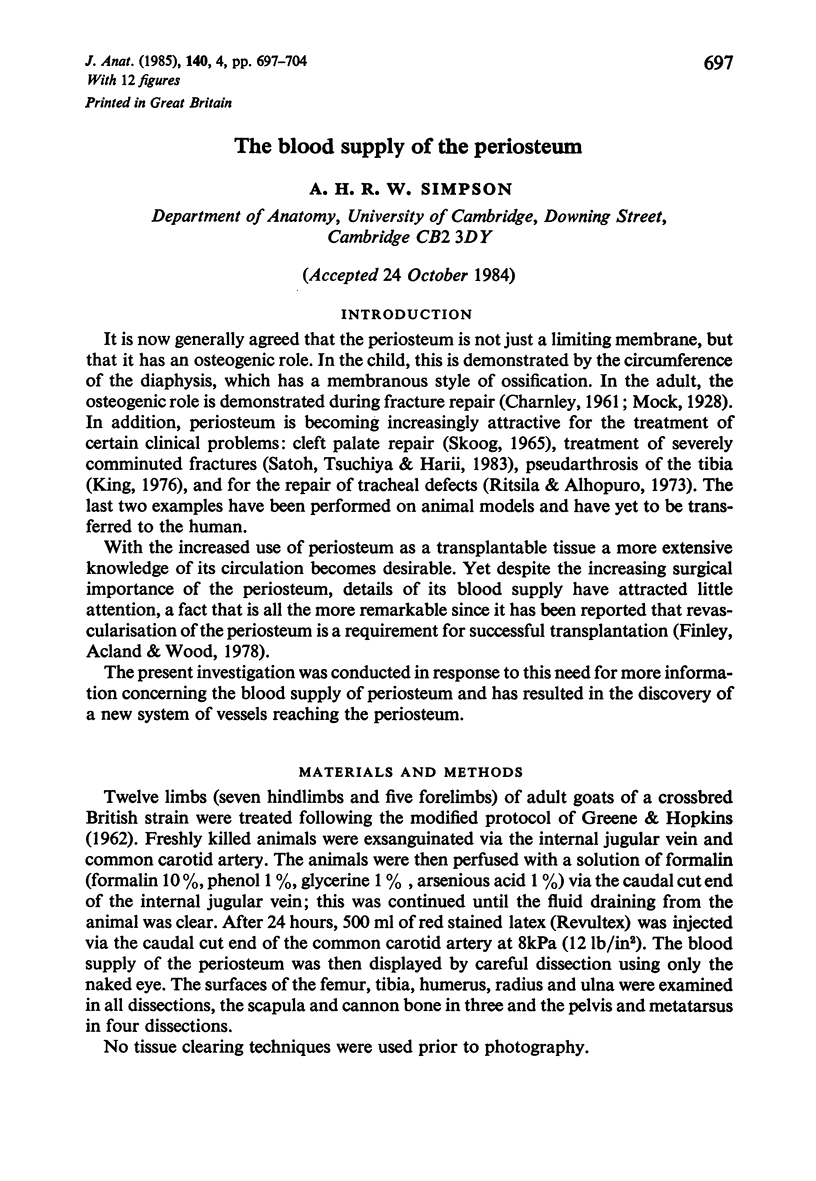
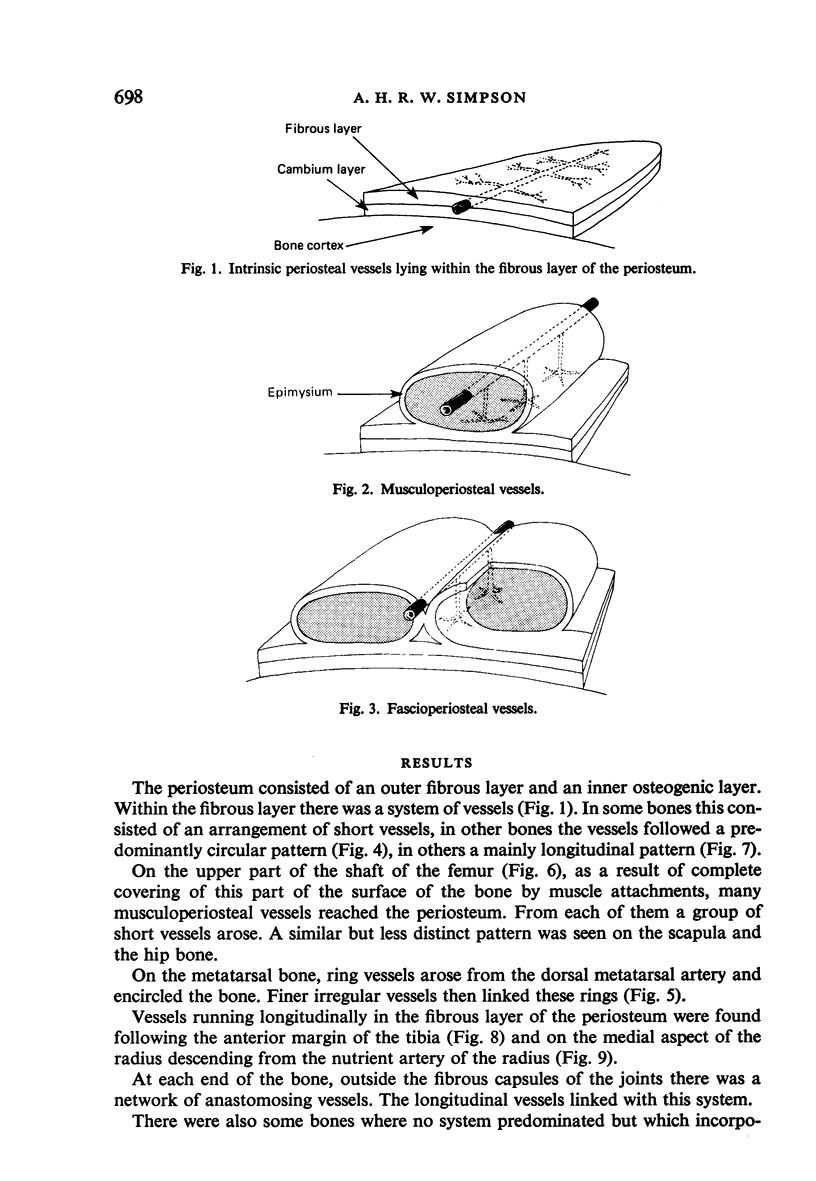
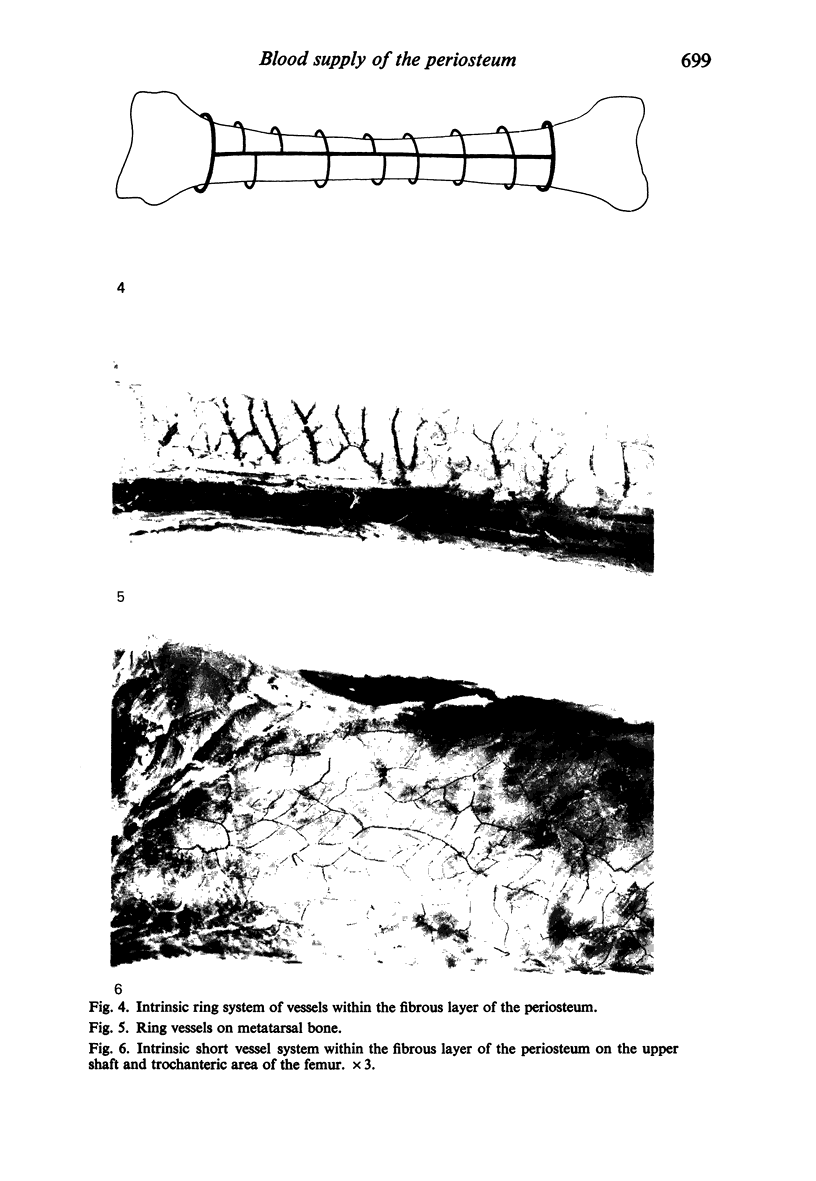
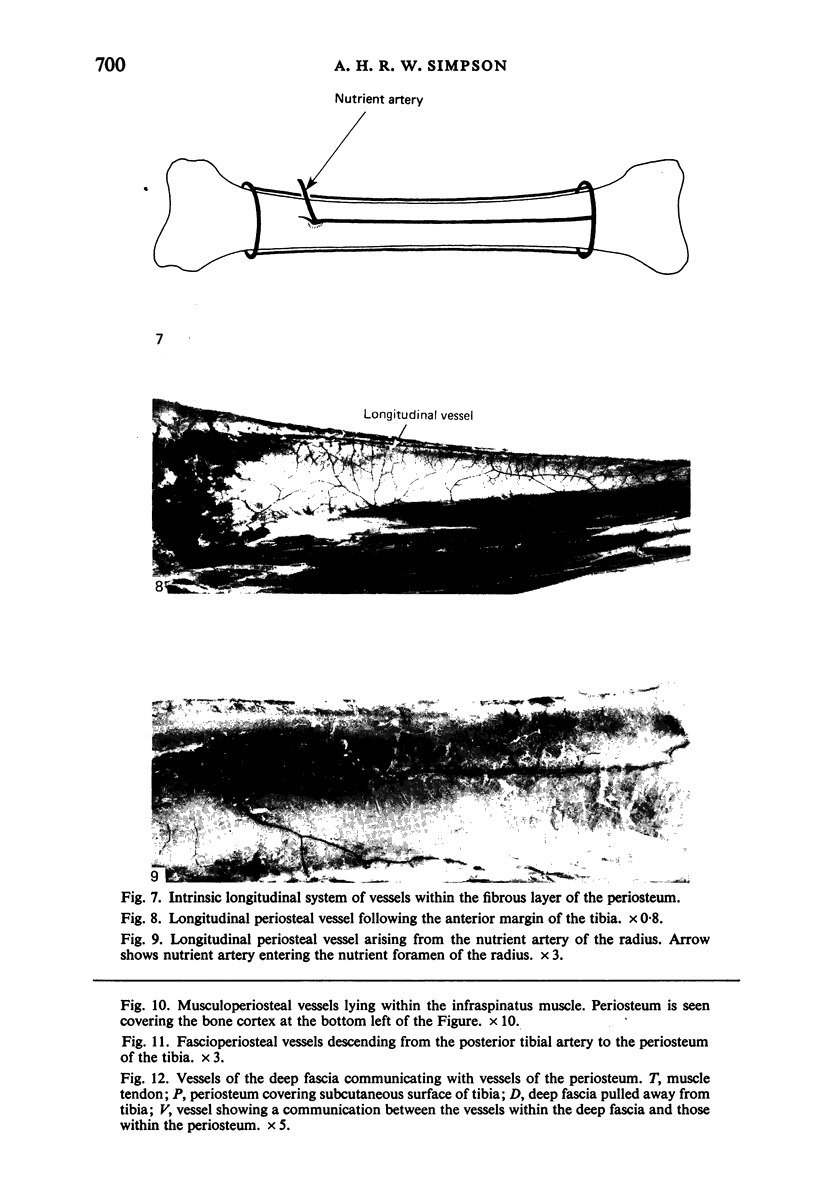
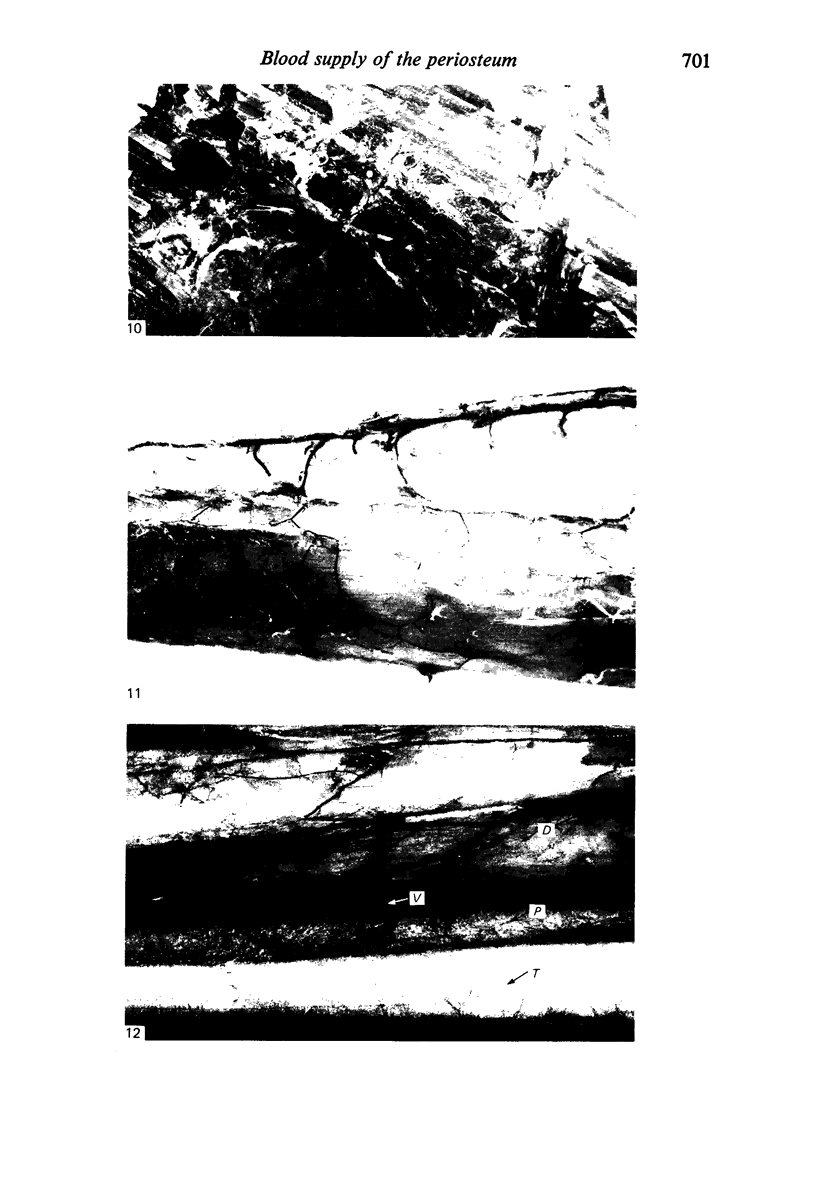
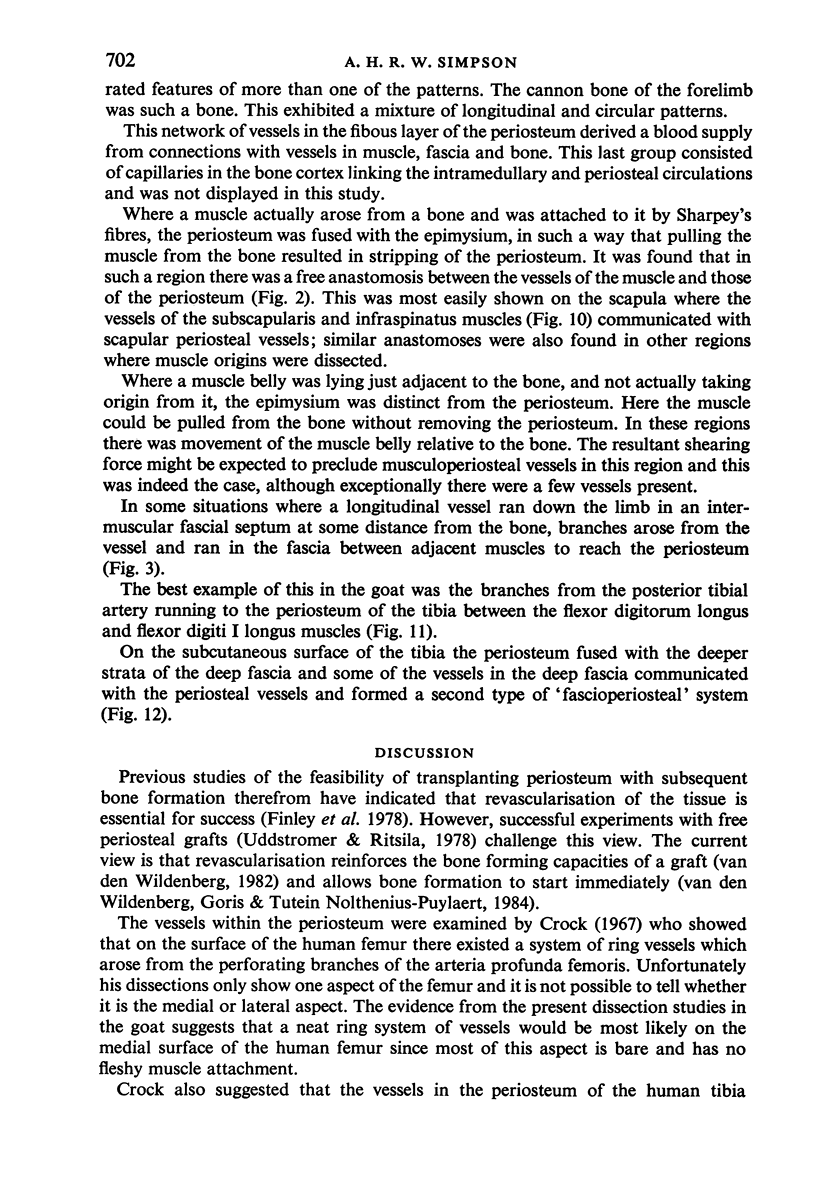
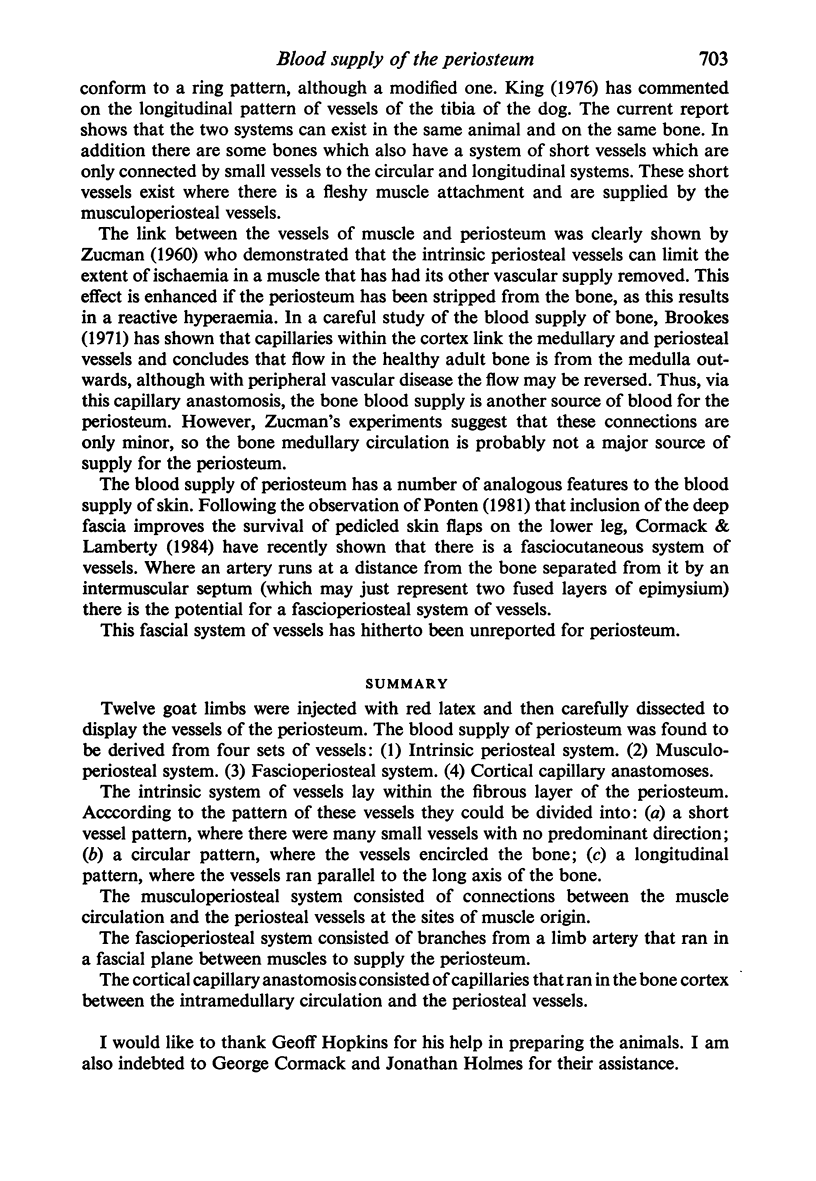
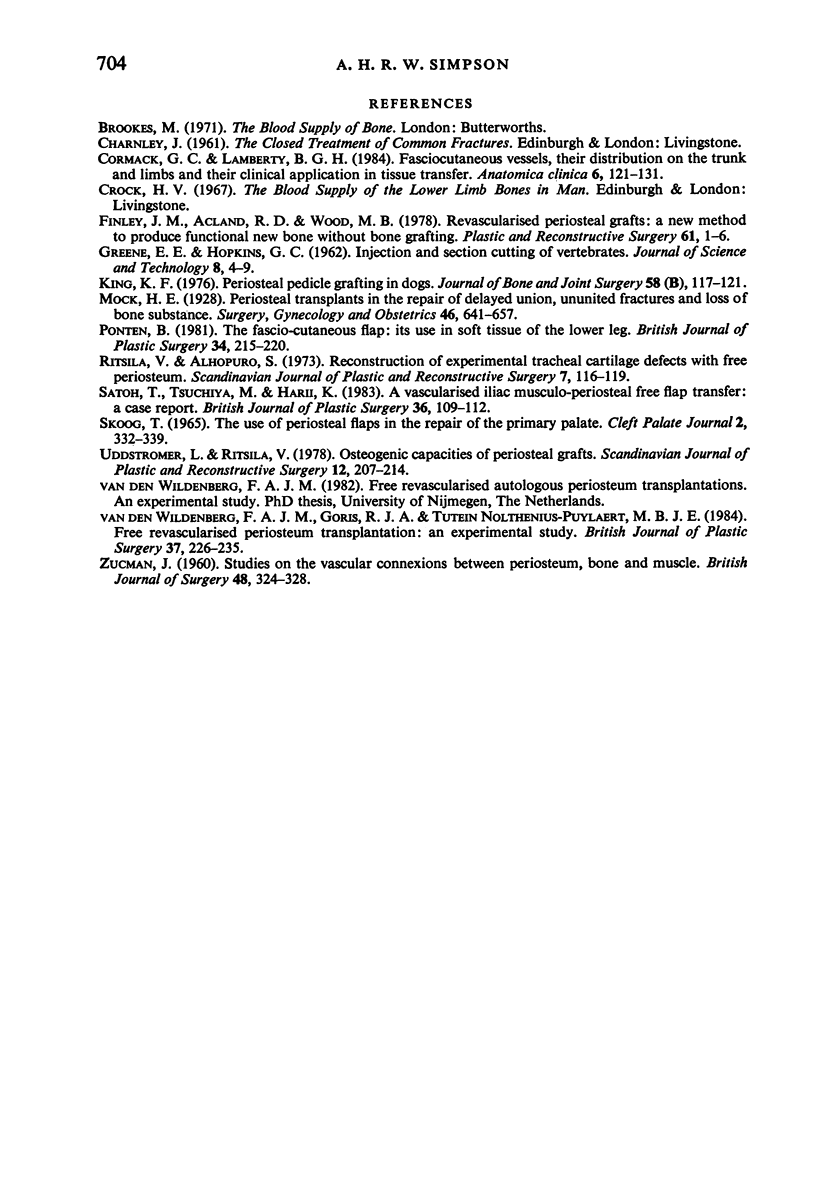
Images in this article
Selected References
These references are in PubMed. This may not be the complete list of references from this article.
- Cormack G. C., Lamberty B. G. Fasciocutaneous vessels. Their distribution on the trunk and limbs, and their clinical application in tissue transfer. Anat Clin. 1984;6(2):121–131. doi: 10.1007/BF01773164. [DOI] [PubMed] [Google Scholar]
- Finley J. M., Acland R. D., Wood M. B. Revascularized periosteal grafts--a new method to produce functional new bone without bone grafting. Plast Reconstr Surg. 1978 Jan;61(1):1–6. doi: 10.1097/00006534-197801000-00001. [DOI] [PubMed] [Google Scholar]
- King K. F. Periosteal pedicle grafting in dogs. J Bone Joint Surg Br. 1976 Feb;58(1):117–121. doi: 10.1302/0301-620X.58B1.1270488. [DOI] [PubMed] [Google Scholar]
- Pontén B. The fasciocutaneous flap: its use in soft tissue defects of the lower leg. Br J Plast Surg. 1981 Apr;34(2):215–220. doi: 10.1016/s0007-1226(81)80097-5. [DOI] [PubMed] [Google Scholar]
- Ritsilä V., Alhopuro S. Reconstruction of experimental tracheal cartilage defects with free periosteum. A preliminary report. Scand J Plast Reconstr Surg. 1973;7(2):116–119. doi: 10.3109/02844317309056420. [DOI] [PubMed] [Google Scholar]
- Satoh T., Tsuchiya M., Harii K. A vascularised iliac musculo-periosteal free flap transfer: a case report. Br J Plast Surg. 1983 Jan;36(1):109–112. doi: 10.1016/0007-1226(83)90025-5. [DOI] [PubMed] [Google Scholar]
- Skoog T. The use of periosteal flaps in the repair of clefts of the primary palate. Cleft Palate J. 1965 Oct;2:332–339. [PubMed] [Google Scholar]
- Uddströmer L., Ritsilä V. Osteogenic capacity of periosteal grafts. A qualitative and quantitative study of membranous and tubular bone periosteum in young rabbits. Scand J Plast Reconstr Surg. 1978;12(3):207–214. doi: 10.3109/02844317809012996. [DOI] [PubMed] [Google Scholar]
- ZUCMAN J. Studies on the vascular connexions between periosteum, bone, and muscle. Br J Surg. 1960 Nov;48:324–328. doi: 10.1002/bjs.18004820915. [DOI] [PubMed] [Google Scholar]
- van den Wildenberg F. A., Goris R. J., Tutein Nolthenius-Puylaert M. B. Free revascularised periosteum transplantation: an experimental study. Br J Plast Surg. 1984 Apr;37(2):226–235. doi: 10.1016/0007-1226(84)90014-6. [DOI] [PubMed] [Google Scholar]











